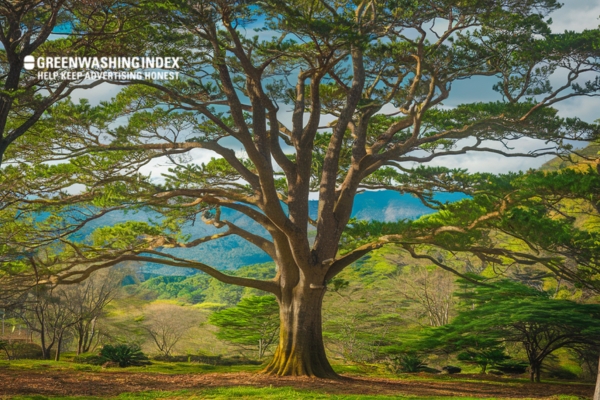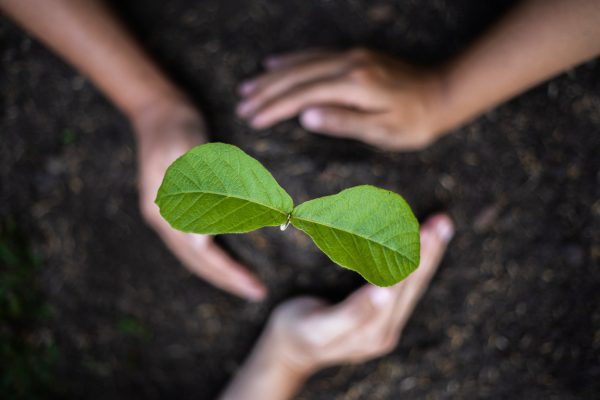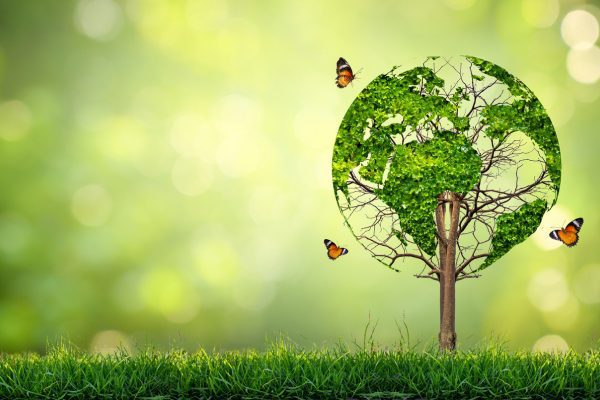

Every second, we lose an area of forest the size of a football field. But here’s the empowering truth: every single action you take today can help reverse this trend.
With 2 billion people depending on forests for survival and trees being our primary defense against climate change, deforestation threatens our planet’s future. The good news? You have the power to make a difference.
You can save trees through 15 practical actions ranging from simple daily choices (going paperless, recycling) to meaningful community involvement (planting trees, removing invasive species, advocating for policy changes). Whether you’re wondering how to save trees in your backyard or how can we save trees from heat stress caused by climate change, this guide has you covered.
This comprehensive guide covers immediate actions you can take at home, smart consumer choices that protect forests, hands-on conservation activities, and ways to help save trees through community and advocacy—complete with resources to get started today.

Trees are nature’s most powerful climate warriors. According to the U.S. Department of Agriculture, one acre of forest absorbs six tons of carbon dioxide and produces four tons of oxygen annually—enough to meet the needs of 18 people. When we save a tree, we’re preserving a carbon-storing powerhouse that will absorb over one ton of CO2 throughout its lifetime.
Beyond carbon sequestration, saving trees helps regulate global temperatures, prevent soil erosion, and maintain the water cycle. With Earth currently home to approximately 3 trillion trees, every effort to save the trees contributes to our planet’s climate stability.
The financial incentives for saving trees are compelling. Trees strategically placed around buildings can reduce air conditioning needs by 30% and save 20-50% in heating costs, according to research from the Arbor Day Foundation. Property values increase by 6-7% with excellent landscaping, and mature trees can be valued between $1,000-$10,000 each.
For communities wondering what can we do to save trees while boosting local economies, the answer is clear: urban tree conservation provides immediate financial returns through energy savings and increased property values.
Trees remove dangerous particulate matter from our air, filtering pollutants that contribute to asthma and heart disease. A study by The Nature Conservancy found that time spent among trees correlates with reduced anxiety and depression. In Louisville, Kentucky, planting 9,000 trees improved residents’ health conditions linked to heart disease and stroke.
Urban trees can reduce temperatures by 5-8 degrees Fahrenheit, creating natural air conditioning that saves trees from heat stress while protecting human health during increasingly common heatwaves.
When learning how to save trees, starting at home creates immediate impact. These five strategies can reduce your tree consumption by 50% or more while saving money.

The average American uses 700 pounds of paper annually. By switching to digital alternatives, you can save trees significantly:
One of the most effective ways to help save trees is choosing alternatives. Bamboo grows up to 3 feet daily and regenerates without replanting, making it ideal for:
Proper recycling is crucial when exploring 10 ways to save trees. Each ton of recycled paper saves approximately 17 trees. Follow these guidelines:
Investing in reusable alternatives helps save the tree resources used for disposable products:
Book lovers can save a tree by:
Quick Reference Table: Paper Alternatives for Every Room
| Room | Traditional Product | Tree-Saving Alternative |
| Kitchen | Paper towels | Bamboo reusable cloths |
| Bathroom | Regular toilet paper | Recycled or bamboo TP |
| Office | Paper notebooks | Digital apps or recycled paper |
| Dining | Paper napkins | Cloth napkins |
| Storage | Paper bags | Reusable containers |
Your purchasing power is one of the most effective 10 ways to protect trees. Every product choice either contributes to deforestation or helps save trees.
When shopping, these certifications ensure you’re supporting one of the best 10 ways to conserve forest resources:
Understanding which products drive deforestation is crucial for saving trees. Beef production alone accounts for 41% of global deforestation. To save tree habitats:
Shade-grown coffee represents one of the tastiest ways to help save trees. Unlike sun-grown varieties that require forest clearing, shade-grown coffee:
Progressive companies now offer innovative materials that save the trees:
Certification Guide:
While reducing consumption is vital, actively planting trees remains one of the most direct ways to help save trees and expand our global forest cover. Every tree planted is an investment in our planet’s future that saves trees already stressed by climate change.
Strategic tree planting at home maximizes environmental and economic benefits. Here’s how to save trees while creating value:
Western exposure: Plant deciduous trees on your home’s west side to block afternoon sun. In 5 years, expect 3% energy savings; in 15 years, nearly 12% reduction.
Southern placement: Maximize winter sun exposure by keeping this area clear or using deciduous trees that lose leaves seasonally.
Eastern shade: Morning shade trees reduce cooling costs and create pleasant outdoor spaces.
Northern windbreaks: Evergreen trees here reduce winter heating costs by 10-25%.
When selecting species, choose native trees adapted to your climate. They require less water, resist local pests, and support wildlife while saving trees from unnecessary stress.
Community planting events multiply your impact exponentially. Organizations like TeamTrees have demonstrated the power of collective action, raising over $24 million to plant 24 million trees globally. Local opportunities to save the tree populations include:
Technology now enables everyone to save a tree globally with minimal effort:
Ecosia: This search engine uses ad revenue to plant trees, with over 150 million planted to date. Simply switching your default search engine saves trees with every query.
One Tree Planted: Allows targeted donations to specific regions needing reforestation.
Eden Reforestation Projects: Focuses on hiring local communities to plant trees, creating jobs while saving trees.
These projects address critical areas: the Amazon rainforest, African Great Green Wall, mangrove restoration, and wildfire recovery zones.
Urban forests provide enormous benefits, yet cities often lack tree cover where it’s needed most. Here’s how can we save trees while expanding urban canopy:
Pro-Tip Box: Best Native Trees for Different Climate Zones
| Climate Zone | Recommended Native Trees | Benefits |
| Cold/Northern | Sugar Maple, White Pine, Paper Birch | Hardy, beautiful fall colors, wildlife habitat |
| Temperate | Oak varieties, Tulip Poplar, Redbud | Fast growth, shade, supports biodiversity |
| Hot/Dry | Desert Willow, Palo Verde, Mesquite | Drought-resistant, saves trees from water stress |
| Coastal | Live Oak, Monterey Cypress, Pacific Madrone | Salt-tolerant, wind-resistant |
| Tropical | Royal Poinciana, Jacaranda, Native Palms | Provides shade, tropical fruit options |
Protect Existing Trees: Conservation in Action
While planting new trees is important, protecting existing forests is even more critical. Mature trees store exponentially more carbon than saplings, making conservation one of the top 10 ways to save trees effectively.
Invasive species represent a silent threat to trees worldwide. English ivy, in particular, is destroying trees across North America by:
How to remove ivy and save trees:
Organizations like Save Our Trees have freed over 5,000 trees from invasive vines through volunteer efforts.
Understanding tree health helps in saving trees from preventable death:
Watering: Deep, infrequent watering encourages strong root systems. Young trees need 15-20 gallons weekly during growing season.
Mulching: Apply 2-4 inches of organic mulch around trees, keeping it away from the trunk. This saves trees from heat stress and retains moisture.
Pruning: Remove only dead, damaged, or crossing branches. Never top trees or remove more than 25% of the crown.
Fertilizing: Most native trees don’t need fertilization if planted in suitable soil.
Vigilant citizens play a crucial role in saving trees from illegal activities:
Construction damage kills thousands of urban trees annually. Here’s what can we do to save trees during development:
Before construction:
During construction:
Value-Add: Invasive Species Identification Guide
| Invasive Species | Identifying Features | Removal Method |
| English Ivy | Dark green, waxy leaves with 3-5 lobes | Cut and remove from trees |
| Kudzu | Large, three-part leaves; purple flowers | Repeated cutting or herbicide |
| Tree of Heaven | Compound leaves with 10-40 leaflets | Cut and treat stumps |
| Norway Maple | Similar to native maples but with milky sap | Professional removal recommended |
| Autumn Olive | Silver-green leaves, red berries | Cut and treat to prevent regrowth |
Individual actions to save trees multiply exponentially through community involvement. When people unite around saving trees, entire forests can be protected and restored. Here’s how to transform personal commitment into collective action.
Volunteering provides hands-on opportunities to save the trees while building community connections. Local groups need volunteers for:
Tree planting and care: Join spring and fall planting days, water young trees during droughts, and help establish urban forests.
Invasive species removal: Many groups organize “ivy pulls” and restoration work days that directly save tree populations from invasive threats.
Education and outreach: Help teach others 10 ways to save trees through workshops, school programs, and community events.
Monitoring and data collection: Participate in tree inventories and health assessments that inform conservation strategies.
Notable organizations accepting volunteers include:
Financial support enables professional conservation work that saves trees on a massive scale. When choosing where to donate, consider:
Impact transparency: Organizations should clearly show how donations translate to trees saved or planted.
Local vs. global: Both matter—local groups save a tree in your community, while global organizations tackle deforestation hotspots.
Holistic approach: The best organizations don’t just plant trees; they protect existing forests, support communities, and ensure long-term survival.
Highly-rated organizations:
Creating your own tree care events is one of the most effective ways to help save trees while building community bonds:
Planning steps:
Activity ideas:
Spreading awareness about 10 ways to protect trees creates ripple effects throughout your network:
Social media strategies:
Educational events:
Engagement Element: Directory of Major Conservation Organizations
| Organization | Focus Area | How They Save Trees | Get Involved |
| Local/Regional | |||
| Neighborhood Associations | Urban canopy | Tree planting, maintenance | Join committees |
| Land Trusts | Forest preservation | Purchasing threatened land | Donate, volunteer |
| Watershed Groups | Riparian forests | Stream restoration | Monitoring, planting |
| National | |||
| Sierra Club | Policy, protection | Advocacy, legal action | Local chapters |
| National Forest Foundation | Public lands | Restoration projects | Volunteer vacations |
| Trust for Public Land | Urban forests | Creating parks | Support campaigns |
| International | |||
| WWF | Global forests | Protection programs | Adopt an acre |
| Conservation International | Biodiversity hotspots | Community partnerships | Carbon offsets |
| Eden Projects | Developing nations | Employing locals to plant | Monthly giving |
Advocacy: Creating Lasting Change
While individual and community actions save trees directly, advocacy creates the systemic changes needed for large-scale forest protection. Here’s how to leverage your voice for forests.
Political action remains one of the most powerful ways to help save trees at scale:
Federal level:
State level:
Local level:
Urban tree ordinances are essential tools that save the tree canopy in developed areas:
Key provisions to support:
How to advocate effectively:
Supporting responsible forestry helps save trees while maintaining needed wood products:
Certification advocacy: Push retailers to stock only certified wood products
Corporate engagement: Pressure companies to adopt zero-deforestation policies
Investment activism: Advocate for divestment from companies causing deforestation
Consumer education: Help others understand how their choices save a tree
Corporate pressure campaigns have successfully changed practices that now save trees globally:
Effective letter elements:
Target companies based on impact:
Pro-Tip: Template Letters for Effective Advocacy
To Elected Officials: “Dear [Representative],
I’m writing to urge your support for [specific legislation] that will help save trees in our community. As your constituent, I’m concerned about [specific local issue].
Trees provide crucial benefits including [list 2-3 specific benefits relevant to your area]. By supporting this measure, you’ll help ensure future generations can enjoy these benefits.
I look forward to your leadership on this issue and would appreciate hearing your position.
Sincerely, [Your name and address]”
To Companies: “Dear [Company Leadership],
As a [customer/shareholder], I’m concerned about your sourcing of [specific product] and its impact on deforestation.
I’m asking you to:
Until these changes are made, I will [specific action – boycott, divest, etc.]. I hope you’ll take leadership in saving trees for our planet’s future.
Regards, [Your name]”
Climate change has made understanding how can we save trees from heat stress more critical than ever. With record-breaking temperatures and extended droughts becoming common, trees face unprecedented challenges. Here’s your comprehensive guide to protecting trees from extreme heat.
Early detection is crucial for saving trees from heat damage. Watch for these warning signs:
Leaf symptoms:
Branch and bark indicators:
Overall tree health:
The International Society of Arboriculture notes that heat stress weakens trees’ natural defenses, making early intervention essential to save the trees in your care.
Water management is the most important factor in how can we save trees from heat stress. Here’s how to water effectively:
Deep watering method:
Watering schedule adjustments:
Water conservation tips:
Proper mulching is one of the simplest ways to help save trees from heat stress:
Mulching best practices:
Benefits of mulching:
Temporary shade solutions:
Choosing the right species is fundamental to saving trees in a warming climate:
Heat-tolerant deciduous trees:
Heat-tolerant evergreens:
Native alternatives by region:
| Region | Traditional Trees at Risk | Heat-Resistant Alternatives |
| Southwest | Colorado Blue Spruce | Palo Verde, Mesquite |
| Southeast | Sugar Maple | Southern Red Oak, Bald Cypress |
| Midwest | White Birch | Honeylocust, Ohio Buckeye |
| California | Coast Redwood (in valleys) | Valley Oak, Incense Cedar |
| Northeast | Eastern Hemlock | Black Gum, American Hornbeam |
Additional heat stress prevention:
Research from the USDA Forest Service shows that selecting climate-adapted species can increase tree survival rates by up to 75% in urban heat islands.
Technology and Innovation: Modern Ways to Save Trees
The digital age offers innovative solutions for those wondering how to save trees using 21st-century tools. Technology multiplies our individual impact and creates new pathways for forest conservation.
Smartphone apps have revolutionized how we save trees daily:
Search engines that plant trees:
Productivity apps:
Conservation apps:
Understanding your impact helps optimize efforts to save a tree:
Carbon footprint calculators:
Digital alternatives tracking:
Organizational tools:
Satellite technology has become crucial in efforts to save the trees globally:
Public monitoring platforms:
How to contribute:
Blockchain technology offers new ways to save trees through financial innovation:
Tree-focused cryptocurrencies:
NFT projects supporting forests:
Considerations:
Even with the best intentions, certain mistakes can undermine efforts to save trees. Understanding these pitfalls helps ensure your conservation actions truly benefit forests rather than causing unintended harm.

One of the most damaging errors when trying to save a tree ecosystem is introducing non-native species:
Why it’s harmful:
Common non-native mistakes:
How to avoid: Always consult local extension offices or native plant societies for appropriate species lists.
Not all tree-planting initiatives actually save trees effectively:
Red flags to watch for:
Due diligence steps:
Well-meaning care can harm rather than save the trees:
Common care mistakes:
Best practices: Follow ISA (International Society of Arboriculture) guidelines for proper tree care.
While planting trees gets attention, protecting existing forests is often more important:
Why protection matters more:
Balanced approach: For every tree planted, support efforts that save trees already standing through conservation easements, land purchases, and policy advocacy.
Track Your Impact: Measuring Your Tree-Saving Success
Quantifying your efforts to save trees provides motivation and helps optimize your conservation strategies. Here’s how to measure and celebrate your forest protection achievements.
Understanding your paper reduction helps visualize how many trees you save tree by tree:
Paper-to-tree conversion:
Tracking methods:
Simple tracking spreadsheet:
| Month | Sheets Used | Digital Alternatives | Trees Saved | Notes |
| January | 500 | E-bills activated | 0.06 | Started baseline |
| February | 300 | Digital notes app | 0.024 | 40% reduction |
| March | 200 | Cloud storage | 0.036 | 60% reduction |
Tracking neighborhood tree health shows tangible results of efforts to save the trees:
Community monitoring tools:
Success indicators:
Participating in research contributes valuable data while you save trees:
Major citizen science platforms:
Personal contribution tracking:
Use this comprehensive checklist to track your 10 ways to save trees implementation:
Daily Actions
Weekly Actions
Monthly Actions
Annual Impact Summary:
Resources and Tools to Help Save Trees
Building your tree conservation toolkit empowers sustained action. These resources support everyone from beginners learning how to save trees to experienced advocates expanding their impact.
Essential websites:
Mobile apps for tree enthusiasts:
Deepen your knowledge about ways to help save trees:
Free online courses:
Essential books:
Transform ideas into action with funding support:
Small grants (< $5,000):
Larger grants:
Crowdfunding platforms:
Professional guidance ensures efforts to save trees succeed:
Finding certified professionals:
Building relationships:
Frequently Asked Questions (FAQ)
The most effective 10 ways to save trees for daily implementation are:
Each action might seem small, but collectively they save trees significantly when adopted by many people.
To save trees from large-scale deforestation:
Research shows protecting existing forests is the most effective way to save trees. Mature forests store more carbon, support more biodiversity, and provide more ecosystem services than new plantings. The single most impactful action is supporting organizations that purchase and protect threatened forestland, followed by advocating for strong forest protection policies.
Trees combat climate change through multiple mechanisms:
Understanding these benefits motivates more people to save the trees.
Absolutely! Individual actions to save a tree create ripple effects:
Remember: every tree saved matters, and every person’s efforts to save trees contribute to global forest conservation.
Conclusion
From simple daily actions like going paperless to meaningful community involvement through planting and advocacy, you now have 15 powerful ways to save trees and protect our forests. The journey to save the trees begins with a single step—whether that’s switching to bamboo toilet paper, removing ivy from a neighborhood tree, or signing up for a local tree-planting event.
The evidence is clear: trees are essential for our survival, providing oxygen, fighting climate change, and supporting 2 billion human livelihoods. By implementing these ways to help save trees, you join a global movement protecting Earth’s lungs. Whether you’re learning how can we save trees from heat stress or discovering what can we do to save trees in urban areas, every action counts.
Start with one action today. Choose the strategy that resonates most with you—perhaps downloading a tree-planting search engine, buying FSC-certified products, or joining a community conservation group. Share this guide with others who want to learn how to save trees, and together we can ensure forests thrive for generations to come.
Remember: when we save a tree, we save our future. The time to act is now.
